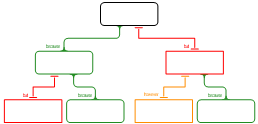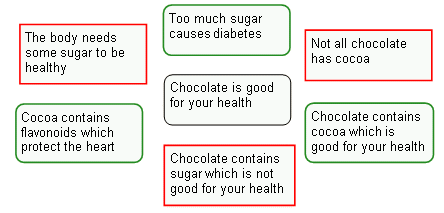The Science Of Scientific Writing Set 1 Set 1-Argument Parts : Second Page : Third Page : Example : Exercise 1 : Exercise 2 : Exercise 3 : Exercise 4 : Exercise 5 : Final Page - Set 1.
OVERVIEW: The way to well-written science
PART I: Paragraphs and Sentences
SET A: Paragraphs: The Maps Behind Them
SET B: Paragraphs: Using Maps to Meet Readers' Expectations
SET C: Paragraphs with Something Extra: Points and Tails
SET D: The Generic Section: Expectations and Maps as Blueprints
SET E: Scientific Sections: The Methods and Results
SET F: Scientific Sections: The Discussion
SET G : Scientific Sections: The Introduction
SET H : Sentences
SET I : The Paper as a Whole
PART II: The Paper and its Sections
SET 1: Argument Parts
SET 2: Indicator Words
SET 4: Locating Arguments in Prose
SET 5: Rationale's Essay Planner
SET 6: Evidence in Arguments: Basis Boxes
Synthesis 1: Position-Early Paragraphs
Synthesis 2: Position-Final Paragraphs
Synthesis 3: Writing a Discussion I
Synthesis 4: Writing a Discussion II
Exercise 5
1. Ready for something challenging? Here's a fairly complex map structure:

We'll help you out by identifying the reasons and objections. Your job is to work out where each of the following claims belongs in that map:

Drag this image onto the workspace to proceed. You must be using the inbuilt browser in Rationale 1.3 or later. |
|
Hints:
- Identify the top level reason and objection. It helps to look for key words - for example, the word 'chocolate' is in the position, and it appears in only two other claims. Those claims belong at the level immediately under the position.
- Key words can also help us work out which claims belong to which branches: look for the key word 'cocoa' in one branch, and 'sugar' in the other
2. Check your work against the model.
Content of this page drawn in whole or part from the Austhink Rationale Exercises with permission from Austhink.